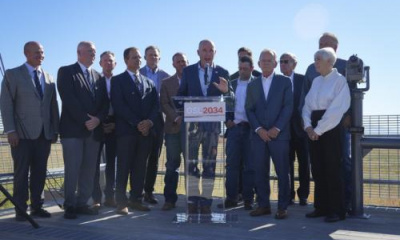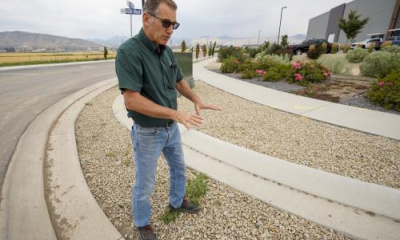Do you feel like you’ve read/seen/heard more news about the Great Salt Lake in the past several months than you have in, like, years?
You’re not wrong.
This article is published through the Great Salt Lake Collaborative, a solutions journalism initiative that partners news, education and media organizations to help inform people about the plight of the Great Salt Lake — and what can be done to make a difference before it is too late. Read all of our stories at greatsaltlakenews.org.
It’s been about 10 months since a group of news outlets, educators, experts and community organizations — 23 strong — boarded a fairly unprecedented ship, working together to report on the lake. Together and with the support of the Solutions Journalism Network, we’ve shared more than 150 stories, led tours of the lake, compiled an anthology of lake-inspired literature and hosted community conversations.
You know all about the problems Utah faces as the Great Salt Lake flounders, leaving toxic dust under a thin layer of dried lakebed as the water retreats.
Dangerous air quality. Collapse of industry. Suffering species. Disrupted environments.
But more than that, we want to report on ways to help.
Solutions.
Like the conservation successes in Nevada, reported by Fox 13 News’ Ben Winslow and Utah Public Radio’s Sheri Quinn. Tagline: “Solutions found for Great Salt Lake in Sin City? What happens in Vegas shouldn’t stay in Vegas.”
Or the compelling and comprehensive stories born from a joint reporting trip by the Deseret News, the Salt Lake Tribune and Fox 13 News to California, looking at the stumbles and solutions at that state’s own saline lakes, Mono and Owens (or the dry, dusty lakebed where Owens Lake used to be).
Those stories were published and aired by collaborative partners, including here on Deseret.com, for a wide range of audiences to learn from.
So, what do we hope happens now?
We want readers/viewers/listeners of our different outlets to feel hope that the Great Salt Lake can be restored to health, not just long enough to avert disaster but for the long run. One reader of our reporting from California called the work “the most hopeful story I’ve read about the catastrophe befalling the Great Salt Lake.” Another reader of the Las Vegas project let us know, “Interested me because I need some sod.”
That’s what we were going for!
And we want the state’s leaders, policymakers and stakeholders to — as our friends at the Utah Jazz say — take note. See the community investment in healing the lake, learn from the solutions we’re reporting on and search for our own. This problem is too big and too complex to simply mimic a strategy or two used in other places — we’re also going to need to find our own answers.

.jpg)







